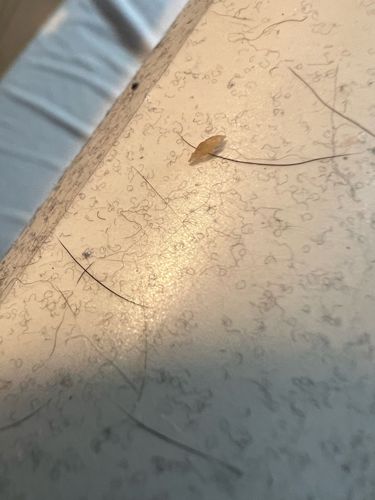Head louse egg (nit) or Dandruff flake
Scientific Name: Pediculus humanus capitis (for louse egg); not applicable for dandruff
Order & Family: Phthiraptera, Pediculidae (for louse egg); not applicable for dandruff
Size: Approximately 0.5-1 mm in length (louse egg); variable (dandruff)

Natural Habitat
Attached to hair shafts, typically close to the scalp (louse egg); scalp (dandruff)
Diet & Feeding
Lice feed on human blood (adult and nymphs), but eggs do not feed; dandruff is composed of dead skin cells
Behavior Patterns
Louse eggs are laid by adult female lice and cemented firmly to individual hair strands. They hatch into nymphs within 7-10 days. Dandruff is a common condition where flakes of dead skin shed from the scalp.
Risks & Benefits
Head lice can cause itching, irritation, and secondary skin infections due to scratching; they do not transmit diseases. Dandruff is generally harmless but can be a cosmetic concern and sometimes itchy. Neither provides benefits.
Identified on: 10/12/2025